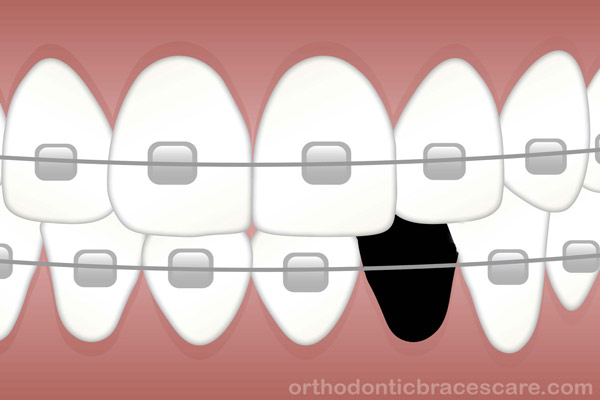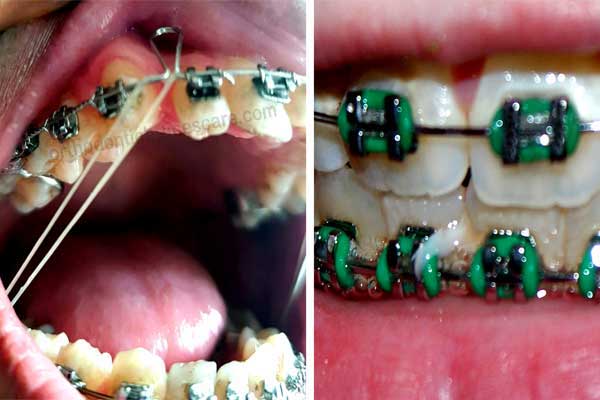So, you finally got your braces on—congrats on taking the leap toward a straighter smile! 🎉 But let’s be honest, no one warns you about that dull, throbbing ache that shows up a few hours later.
As a dentist who’s seen countless patients nervously fidgeting in the chair after their first braces adjustment, I can tell you that this discomfort is completely normal.
Here’s the good news: braces pain doesn’t have to feel like a medieval torture device.
With the right habits and a few insider tricks (I’ve learned plenty from my years in orthodontics), you can dramatically reduce the soreness and go about your day without constantly reaching for your cheeks.
In this guide, I’ll share 15 simple but highly effective tips to help you tackle braces pain like a pro.
Whether it’s that awkward rubbing on your inner cheek or the tenderness after an adjustment, these tips are your survival kit for a smoother, less-painful braces journey.
Understanding Braces Pain
Braces work by applying gentle pressure to move your teeth into their ideal positions. While that’s fantastic for your future smile, your teeth and gums don’t exactly send you a thank-you card for the effort.
- The pressure from the archwires shifts your teeth gradually, which can make them feel sore—especially in the first week or after tightening sessions.
- Brackets and wires sometimes rub against your lips or cheeks, creating tiny sore spots that feel like paper cuts.
- Mild soreness is completely normal, but sharp or intense pain isn’t—so keep an eye out and never hesitate to call your orthodontist if something feels off.
Understanding why braces hurt a little helps you stay patient. That tenderness means your braces are doing their job. Still, there’s no reason to suffer unnecessarily when simple remedies can help.
15 Simple Tips to Reduce Braces Pain and Discomfort
1. Use Orthodontic Wax to Prevent Rubbing
You know that annoying spot where the bracket scrapes your inner cheek like sandpaper? That’s where orthodontic wax comes to the rescue.
- Just pinch a small piece of wax and roll it between your fingers to soften it.
- Press it over the bracket or wire that’s causing irritation.
- Replace it whenever it falls off—especially after eating or brushing.
This is one of my favorite dentist-approved hacks because it’s instant relief and saves your cheeks from a lot of grief.
2. Rinse with Warm Salt Water
When I was a dental intern, I remember my mentor joking that salt water is the cheapest miracle mouth rinse—and he was right.
- Dissolve ½ teaspoon of salt in a glass of warm (not hot!) water.
- Swish it around your mouth for about 30 seconds and spit it out.
- Do this 2–3 times a day, especially if you have sores or swelling.
This simple rinse soothes irritation and speeds up healing. Plus, it’s a natural antibacterial, which is always a win.
3. Apply a Cold Compress
Got that throbbing, achy feeling after your tightening appointment? A cold compress is like your best friend in those first few hours.
- Wrap an ice pack or a bag of frozen peas in a thin towel.
- Hold it gently on the outside of your cheek for about 10–15 minutes at a time.
- Repeat a few times throughout the day as needed.
The cold numbs the area and reduces swelling. Trust me, your jaw will thank you for it.
4. Stick to Soft, Easy-to-Chew Foods
Now’s not the time to be a hero with crunchy apples or crusty bread. Your teeth are sensitive, and tough foods just make things worse.
Go for comfort foods that are gentle on your teeth, such as:
- Mashed potatoes
- Smoothies
- Yogurt
- Scrambled eggs
- Soups and broths
This isn’t forever—just for those tender days after adjustments. (Bonus: no one will judge you for living on mashed potatoes for a bit.)
5. Take Over-the-Counter Pain Relievers Responsibly
If your soreness is more than just mild discomfort, OTC pain relievers can be a lifesaver.
- Common options include ibuprofen or acetaminophen.
- Always follow the instructions on the packaging and never exceed the recommended dose.
- If you’re unsure or have any medical conditions, check with your doctor or orthodontist first.
I often remind my patients: the goal is to take the edge off, not to knock yourself out. Used wisely, pain relievers can make those first few days much more bearable.
6. Avoid Chewing on Hard or Sticky Snacks
Here’s a little tough love—caramel popcorn, gummy bears, and ice cubes are off the table. Not only do they increase discomfort, but they can also damage your braces.
Opt for snacks that are soft and easy to chew. Think pudding, soft bananas, or creamy oatmeal. Skipping the sticky stuff now saves you from unnecessary pain (and extra orthodontist visits later).
7. Use a Warm Compress for Jaw or Cheek Soreness
Sometimes, the pain isn’t just in your teeth—it’s in your jaw muscles or cheeks from all that new pressure. A warm compress can work wonders for relaxing those tense areas.
- Soak a clean washcloth in warm (not hot) water, wring it out, and place it on the sore spot.
- Leave it there for about 10–15 minutes.
- Do this a couple of times a day to ease muscle tension.
I find that alternating between cold and warm compresses can give you the best of both worlds: cold to numb the ache, warm to relax the muscles.
8. Practice Gentle Orthodontic Massage
This one’s surprisingly underrated. Massaging your gums can increase blood flow and ease that dull ache.
- Wash your hands thoroughly (please don’t skip this step).
- Using a clean fingertip, gently massage your gums around the sore spots in slow, circular motions.
- Do this for 30–60 seconds a few times a day.
It feels odd at first—like you’re giving your gums a mini spa treatment—but it really helps loosen up the tension. Just keep it gentle; pressing too hard can make things worse.
9. Use Topical Oral Anesthetics for Quick Relief
Sometimes, you need fast, targeted pain relief—that’s where over-the-counter oral anesthetic gels (like those with benzocaine) step in.
- Apply a tiny dab of gel directly on the sore spot using a clean cotton swab.
- Avoid eating or drinking for at least 30 minutes after application so the gel can do its thing.
I tell my patients to save this trick for the evenings or right before meals when soreness peaks. It’s a great “spot treatment” for those pesky irritation points.
10. Stay on Top of Oral Hygiene (Even if It’s Tender)
I get it—brushing when your gums feel like they’re on strike is no fun. But slacking on oral hygiene only invites more pain in the long run.
- Use a soft-bristled toothbrush to avoid aggravating tender gums.
- Brush slowly and gently, focusing on the gumline and around brackets.
- Rinse with a mild alcohol-free mouthwash to keep things fresh and reduce bacteria.
Keeping your mouth clean prevents infections and stops tiny sores from turning into bigger problems. Think of it as protecting your future pain-free self.
11. Drink Plenty of Cold Water Throughout the Day
Here’s the easiest hack on the list: drink cold water regularly. It works like a mini ice pack for your teeth.
- Keep a chilled water bottle handy, especially after adjustments.
- Sip slowly throughout the day to reduce swelling and keep your mouth hydrated.
- Skip the sugary sodas—those can increase sensitivity and risk for cavities.
It’s simple, refreshing, and dentist-approved for both comfort and oral health.
12. Chew Sugar-Free Gum to Ease Pressure
This tip surprises most people. Lightly chewing sugar-free gum (look for orthodontist-approved brands) can help stimulate blood circulation in your gums and reduce that pressure-like ache.
- Start with short sessions, just a few minutes at a time.
- Stick to soft, pliable gum—nothing hard or sticky.
A lot of my teenage patients love this trick because it feels like a “normal” snack, but it also helps the soreness fade a little faster.
13. Adjust Your Diet After Tightening Appointments
The day or two after a tightening is not the time to test your jaw’s endurance. Plan ahead with soft meals.
- Think smoothies, creamy soups, rice porridge, and soft-cooked pasta.
- Avoid hot, spicy, or crunchy foods that can irritate sore gums.
This small adjustment makes a huge difference. Your teeth will thank you for giving them a little break.
14. Use a Mouthguard at Night (If You Clench or Grind)
Many people unconsciously clench or grind their teeth at night, which can worsen soreness. A soft mouthguard helps cushion that pressure.
- Over-the-counter guards work for some, but a custom-fitted one from your orthodontist is even better.
- Wear it consistently at night to protect both your braces and your jaw.
I’ve seen patients wake up with far less morning soreness after switching to a guard—it’s definitely worth considering.
15. Stay Consistent with Orthodontist Appointments
This last one might sound obvious, but it’s crucial: don’t skip your scheduled visits.
- Regular checkups ensure your braces adjustments stay on track.
- Your orthodontist can also fix issues like poking wires or loose brackets before they become painful.
Think of these visits as routine “tune-ups” for your smile. Showing up on time often means less pain and fewer surprises.
When to See Your Orthodontist Immediately
Most braces discomfort is temporary, but there are times you should call your orthodontist right away:
- Sharp or intense pain that doesn’t improve within a few days.
- Wires poking your cheek or tongue and causing sores.
- Bleeding, swelling, or signs of infection around your gums.
- Broken brackets or wires that feel loose or out of place.
Don’t tough it out—your orthodontist has quick fixes for these issues that save you from unnecessary suffering.
Final Comfort and Confidence Tips
Braces pain can feel like an annoying roommate who refuses to leave, but remember—it’s temporary. Every bit of soreness means your braces are quietly moving your teeth toward that perfect smile you’ve been dreaming of.
Here’s a quick recap of the top lifesavers:
- Use orthodontic wax early to prevent rubbing.
- Alternate cold and warm compresses for relief.
- Stick to soft foods right after adjustments.
- Stay on top of oral hygiene to avoid extra irritation.
Be patient and kind to yourself—those first few days after adjustments can be rough, but things do get easier as your mouth adjusts.
Conclusion
Braces may test your patience, but these 15 simple tips prove you don’t have to endure the pain in silence. From old-school remedies like saltwater rinses to modern tricks like custom mouthguards, each step helps you stay more comfortable and in control of your orthodontic journey.
As a dentist, I’ve seen hundreds of patients go through this, and I promise the payoff—your beautifully aligned smile—is worth every ounce of temporary soreness. Start with the tips that resonate most with you today, and never hesitate to reach out to your orthodontist for extra guidance.
Here’s to fewer aches, happier gums, and a future full of confident smiles!

Dr. Pallab Kishore, MS in Orthodontics and owner of Orthodontic Braces Care, shares expert tips on braces, aligners, and oral health from 10+ years of experience.


